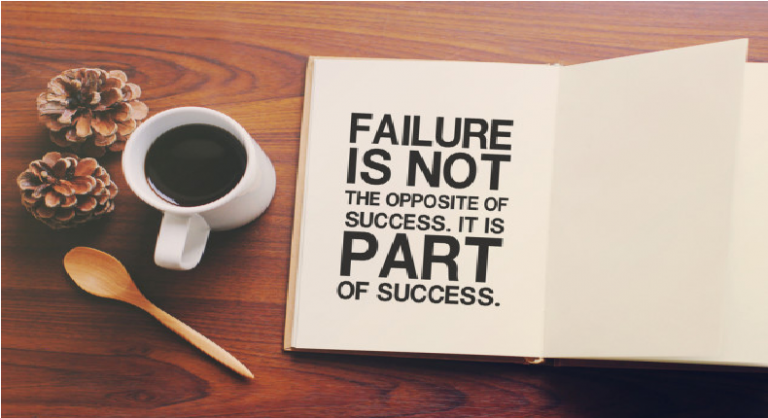
In our pursuit of greatness, we are bound to encounter both triumphs and tribulations. It is a journey marked by the rise and fall of our aspirations, an expedition that tests our resilience and resolve. Yet, let us understand that these falls should never signify the end of the road to our destined greatness, for it is ordained by a higher power.
When we stumble and experience setbacks, they are not stumbling blocks but stepping stones. They are the valuable lessons that propel us forward on our path to greatness. It is crucial that we pick ourselves up, dust off the dirt of failure, and carry with us the wisdom we have gained from the causes of our falls.
But the journey does not stop there. As we rise again, it is paramount that we do not grow complacent in our newfound greatness. Complacency is a subtle adversary that can lead to our downfall even after we have tasted success. Therefore, we must strike a delicate balance between confidence and vigilance.
Register for Tekedia Mini-MBA edition 19 (Feb 9 – May 2, 2026): big discounts for early bird.
Tekedia AI in Business Masterclass opens registrations.
Join Tekedia Capital Syndicate and co-invest in great global startups.
Register for Tekedia AI Lab: From Technical Design to Deployment (next edition begins Jan 24 2026).
Gratitude plays a pivotal role in this balancing act. We must cultivate the habit of thanking the Giver, the divine force that has ordained our greatness. Gratitude keeps us grounded, reminding us that our achievements are not solely the result of our efforts but also the blessings bestowed upon us. It fosters humility and ensures that we continue to tread the ordained path with humility and grace.
In this journey to greatness, setbacks are not failures, and success is not the ultimate destination. It is a continuous cycle of growth, where we rise higher and higher, fueled by the wisdom gained from our falls and sustained by the gratitude that keeps us connected to our divine purpose.
1. Embrace Resilience
Resilience is the cornerstone of overcoming setbacks. It is the ability to bounce back from adversity, to withstand the storms of life, and to emerge stronger on the other side. Resilience is not a fixed trait; it can be developed and cultivated over time.
To embrace resilience, it’s essential to understand that setbacks are not synonymous with failure. They are merely temporary roadblocks on your journey. When setbacks occur, take a step back and acknowledge your emotions. It’s okay to feel disappointed, frustrated, or even defeated. What matters is how you respond.
One key aspect of resilience is maintaining a growth-oriented mindset. Instead of dwelling on the setback itself, focus on what you can learn from it. Analyze the situation objectively. What led to the setback? What could you have done differently? What skills or knowledge can you acquire to prevent a similar situation in the future?
Resilience also involves setting realistic expectations. It’s crucial to understand your limitations and resources. Set achievable goals and be willing to adapt your plans as needed. When you encounter setbacks, remind yourself of past challenges you’ve overcome. This will boost your confidence and reinforce your belief in your ability to persevere.
2. Analyze and Learn
Setbacks offer valuable lessons that can fuel your future success. However, to extract these lessons, you must be willing to analyze the setback and learn from it. This strategy involves a systematic approach to understanding the root causes of the setback and using that knowledge to your advantage.
Start by objectively examining the situation. What were the circumstances that led to the setback? Were there external factors beyond your control? Or did it result from a specific action or decision on your part? By identifying the causes, you gain insight into what went wrong.
Next, focus on the lessons learned. Consider how the setback can serve as a stepping stone rather than a stumbling block. What skills or competencies can you develop to better handle similar challenges in the future? Remember that each setback is an opportunity for growth and improvement.
To implement this strategy effectively, keep a journal or record of your setbacks and the lessons learned. Over time, you’ll build a valuable resource that can guide your decision-making and problem-solving processes. This reflective practice can also reinforce your commitment to continuous improvement.
3. Seek Support
Dealing with setbacks can be emotionally challenging, and it’s essential to have a support system in place. Seeking support is the third core strategy for overcoming setbacks. Whether it’s friends, family, mentors, or colleagues, having a network of individuals who can provide guidance and encouragement is invaluable.
When setbacks occur, don’t hesitate to reach out to your support network. Share your experiences and emotions with trusted individuals who can offer a listening ear and valuable insights. Sometimes, talking through your challenges can provide clarity and perspective.
Additionally, seeking support means being open to feedback. Constructive criticism from those who have your best interests at heart can help you identify blind spots and areas for improvement. Surrounding yourself with people who believe in your abilities can boost your confidence and motivation.
Setbacks are a natural part of life, but they do not define your journey. By embracing resilience, analyzing and learning from setbacks, and seeking support, you can overcome obstacles and continue on your path to success. Remember that setbacks are not failures but opportunities for growth and improvement. With these core strategies, you can navigate setbacks with confidence and determination, ultimately achieving your goals and aspirations.

